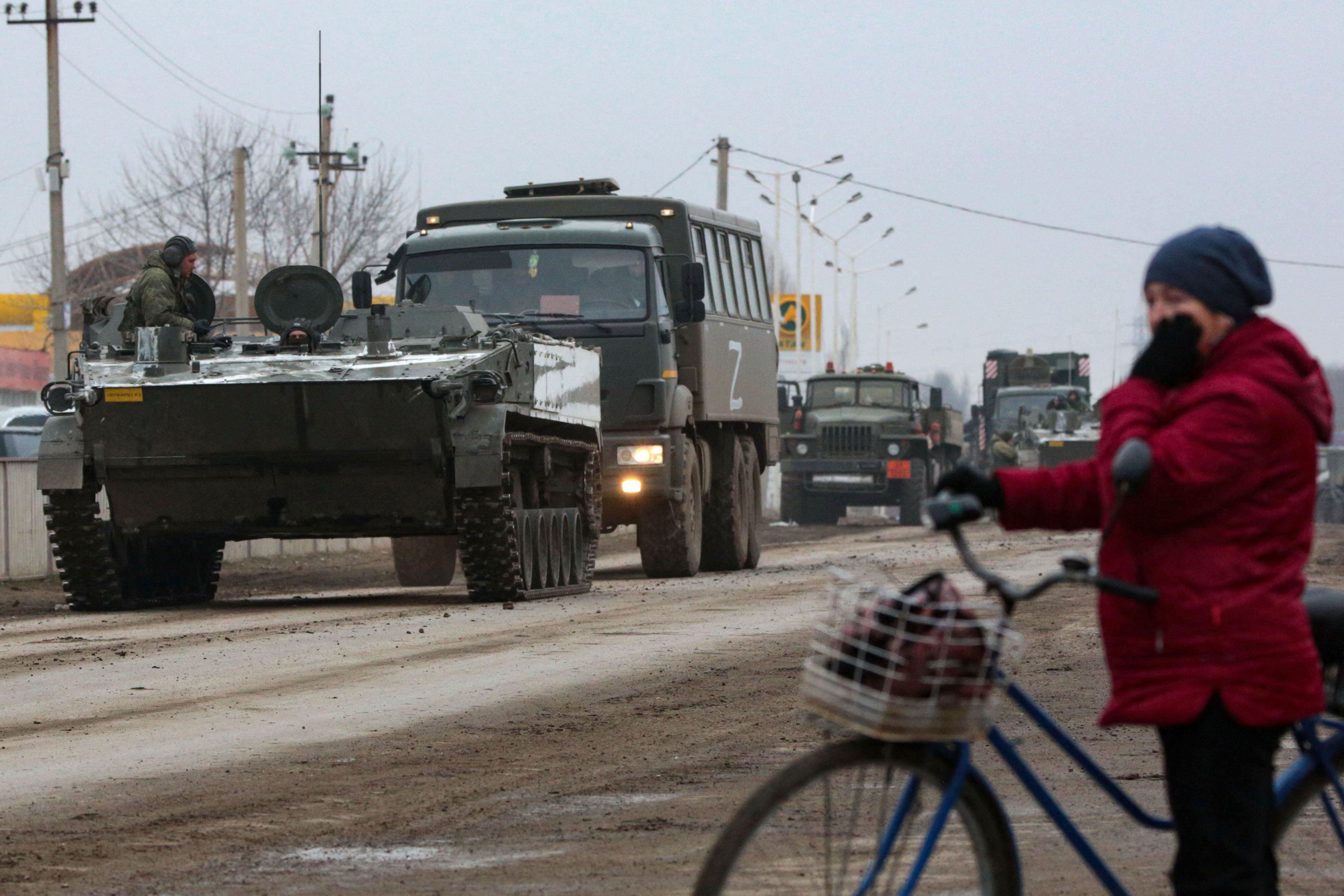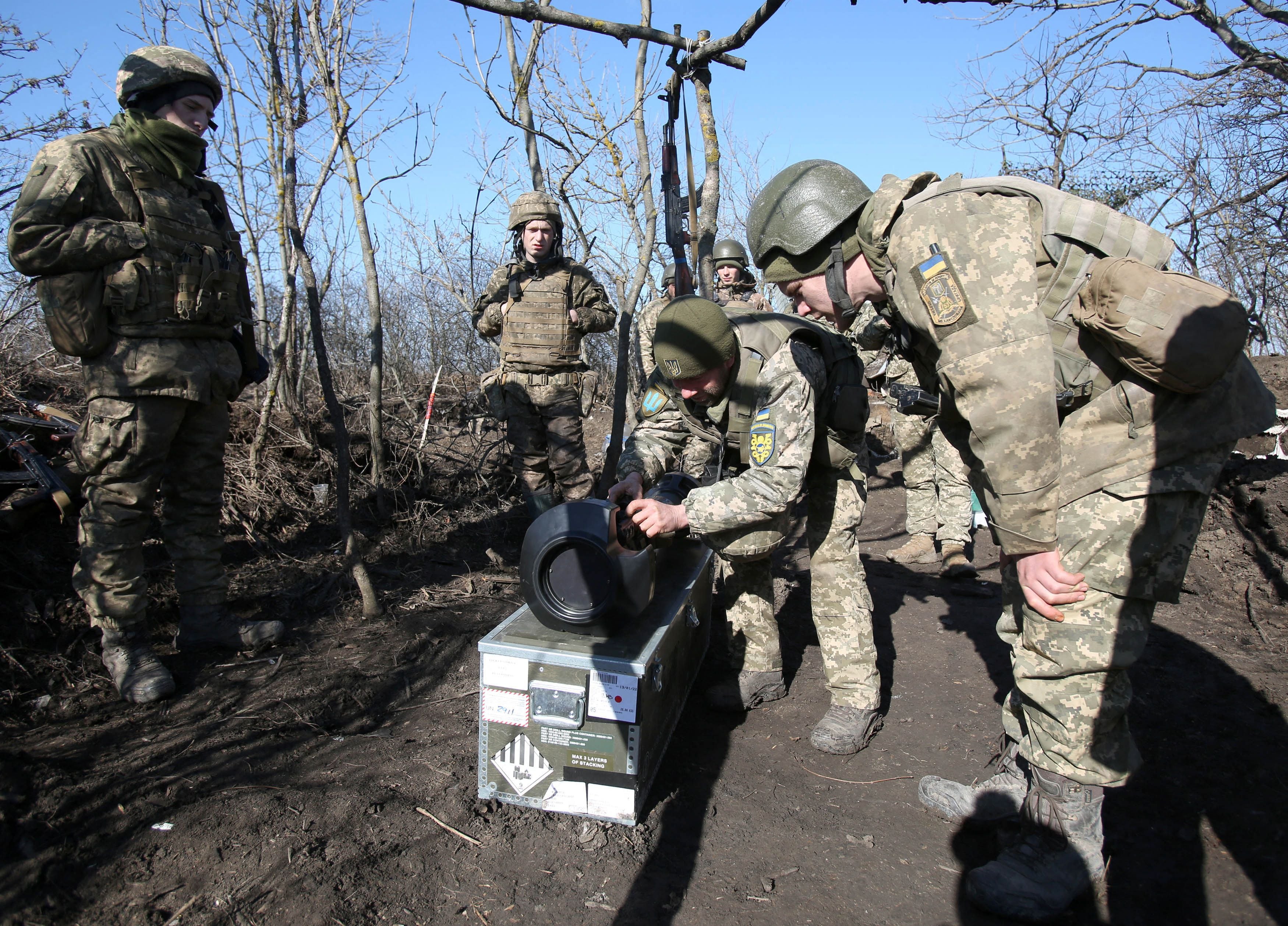WASHINGTON ― The White House told Congress it will need $6.4 billion in new funding to respond to Russia’s war on Ukraine, including $3.5 billion for the Pentagon and another $2.9 billion to support Eastern European allies with security assistance and humanitarian aid.
The proposed $2.9 billion would be for Ukraine, Baltic countries, Poland and other affected countries and would pay for food, energy and economic assistance, as well as resources to counter Russian cyberattacks and disinformation.
Any new funds would be in addition to the $650 million in security aid and $52 million in humanitarian aid the U.S. already pledged to Ukraine over the last year as well as a prior $1 billion sovereign loan guarantee.
The proposal followed a meeting between Biden administration budget officials and congressional House and Senate leaders as well as lawmakers on key committees, Bloomberg reported.
Senate Appropriations Committee Chairman Patrick Leahy, D-Vt., said Friday he would work with the Biden administration and across the aisle to “provide the necessary resources to respond to this unwarranted conflict, particularly to address the humanitarian crisis that is sure to escalate in the wake of Russian aggression.”
“The United States government needs to provide the necessary resources to support our allies and assist the innocent people caught in the middle of this needless calamity,” Leahy said in a statement.
RELATED

The details of the spending package will be negotiated and could change before they’re finalized. The Senate’s top appropriator for foreign aid, Sen. Chris Coons, D-Del., told reporters earlier in the day he thinks a bill of $10 billon or more would have strong bipartisan support.
“There is strong enthusiasm to provide ongoing resupply and training, and whatever other covert and overt support is necessary and appropriate, for the Ukrainian resistance,” Coons said. “$10 billion is probably on the low end because I’m not [including] what may be a robust defense-side request.”
Coons said the humanitarian support is needed to help Poland and other Eastern European countries cope with an expected flood of refugees from Ukraine.
Sen. Lindsey Graham, a senior Republican appropriator, has called for Congress to approve more aid to Ukraine as soon as next week, when the Senate returns from recess.
The discussion of new funding came on the same day Ukrainian President Volodymyr Zelenskyy tweeted that he and Biden had discussed “concrete defense assistance,” among other matters ― and the White House confirmed the administration is talking with lawmakers to secure the aid.
“We are having ongoing conversations with Congress about additional assistance to Ukraine,” White House spokeswoman Jen Psaki told reporters on Friday. She added that the national security teams for both leaders are in close touch as the U.S. considers options for new aid.
Ukraine has been receiving a mix of military support, including U.S.-made Stinger anti-aircraft missiles and ammunition from NATO member Lithuania, and U.S.-made Javelin anti-tank weapons from Washington. Psaki told reporters U.S. military aid to Ukraine will continue.
After the Ukrainian government claimed its forces had destroyed 30 Russian tanks, 130 armored combat vehicles, seven aircraft and six helicopters on the first day of fighting, Ukraine’s ambassador to the United States Oksana Markarova declined to say how many Russian losses were due to Javelins and Stingers.
“Without disclosing what I shouldn’t be disclosing, I want to tell you that we are using them actively and very effectively,” she told reporters in Washington on Friday.
Various proposals are being floated in the wake of a joint bipartisan statement Tuesday in favor of an emergency supplemental for Ukraine. Since then, Russia launched a full-scale invasion, and Ukraine’s pleas for diplomatic, humanitarian and military aid have grown more desperate.
RELATED

An official with the White House Office of Management and Budget said that in a recent conversation with lawmakers, the administration “identified the need for additional U.S. humanitarian, security, and economic assistance to Ukraine and Central European partners due to Russia’s unprovoked and unjustified invasion.”
“As the president and bipartisan members of Congress have made clear, the United States is committed to supporting the Ukrainian people as they defend their country and democracy,” the official said in a statement. “The administration will continue to closely coordinate with our European allies and partners to assess on-the-ground needs, and remain in close touch with Congress as these needs evolve.”
Congress could meet Ukraine’s military needs with more Javelins and Stingers, but also grenade launchers, secure communications gear and other equipment for a light infantry force, according to a congressional source granted anonymity to discuss sensitive budgetary negotiations.
Over time, DoD is also likely to ask Congress to backfill operations and maintenance accounts as it mobilizes 14,000 U.S. troops in Europe to respond to the Ukraine crisis, along with six Air Force F-35 fighter jets and 32 AH-64 Army Apache helicopters.
According to Todd Harrison, director of defense budget analysis and of the Aerospace Security Project at the Center for Strategic and International Studies, DoD’s actual costs are relatively small for now and can be funded with existing resources.
“The direct costs of this are mainly the replacement cost of weapons transferred to Ukraine out of existing stocks and the higher operating costs of forces sent to reassure our NATO allies in the region,” Harrison said in an email. “But even some of those operating costs will be offset by reduced training costs since these deployed forces won’t be able to accomplish all of their training plans.”
Likely targets for spending would be missiles and munitions to replace U.S. inventories and also to supplement the inventories of NATO allies and Ukrainian forces, Harrison said. Other funds, under the European Deterrence Initiative, could be for more resilient infrastructure in the region, improving air and missile defenses, increasing prepositioned equipment and building a larger U.S. military presence in the Baltics, Poland, Romania, and other nations.
“Beyond the specifics of what is funded, the supplemental may also serve as an important form of signaling to Russia,” Harrison said. “It would show that the United States is taking a course of action that has clear costs, has bipartisan political support, and directly improves NATO capabilities in eastern Europe. It is a credible and meaningful way of showing Russia that its actions are having the opposite intended effect.
Joe Gould was the senior Pentagon reporter for Defense News, covering the intersection of national security policy, politics and the defense industry. He had previously served as Congress reporter.








